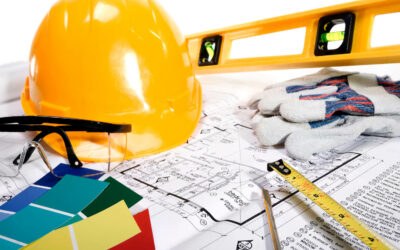
When it comes to increasing the value of your home, few investments are as rewarding as a well-executed kitchen remodeling project. The kitchen is often considered the heart of the home, a space where families gather, meals are prepared, and memories are made. As such, it holds significant sway over potential buyers and can be a make-or-break factor in their decision-making process. In this article, we will explore the art and science of kitchen remodeling, focusing on how you can make informed decisions that not only enhance your living space but also boost the overall value of your home.
The Significance of Kitchen Remodeling
A kitchen remodel is an investment that can yield substantial returns. According to a report by Remodeling Magazine, a minor kitchen remodel typically recoups around 77% of its cost when it comes time to sell your home. However, the potential return on investment can vary depending on various factors such as the extent of the remodel, the quality of materials used, and the local real estate market.
Here are some key reasons why kitchen remodeling is worth considering:
1. Improved Functionality
An outdated kitchen can be inefficient and lack the modern amenities that homeowners and potential buyers desire. Remodeling allows you to optimize the layout, add more storage space, and upgrade appliances for improved functionality. A well-designed kitchen makes daily tasks more manageable and enjoyable.
2. Enhanced Aesthetics
Visual appeal plays a significant role in the perceived value of a home. A kitchen remodel can transform a dated and unattractive space into a stylish and inviting one. Fresh paint, updated cabinetry, and contemporary finishes can breathe new life into your kitchen, making it a focal point of your home.
3. Increased Energy Efficiency
Modern kitchen appliances are often more energy-efficient than their older counterparts. Upgrading to energy-efficient appliances can reduce utility bills, which is an attractive feature for potential buyers concerned about sustainability and cost savings.
4. Enhanced Safety
Outdated kitchens may pose safety hazards. Electrical and plumbing systems can become outdated and unreliable over time. A remodel allows you to address these issues, ensuring that your kitchen is safe and up to code.
5. Improved Home Value
Perhaps the most compelling reason to invest in a kitchen remodel is its potential to increase your home’s value. A well-executed remodel can significantly raise your property’s market price, providing a strong return on investment when it comes time to sell.
Planning Your Kitchen Remodel
Before diving into a kitchen remodel, it’s essential to establish a clear plan. Thoughtful planning ensures that you make informed decisions, stay within your budget, and achieve the desired results. Here’s a step-by-step guide to help you get started:
1. Set Clear Goals
Begin by defining your objectives for the remodel. Are you looking to create a more functional space, update the aesthetics, or both? Understanding your goals will help you prioritize your budget and make design choices that align with your vision.
2. Establish a Budget
Determine how much you’re willing to invest in your kitchen remodel. Be realistic about your financial constraints and make sure to account for unexpected expenses. It’s a good idea to set aside a contingency fund for unforeseen issues that may arise during the project.
3. Research and Inspiration
Gather inspiration from magazines, websites, and social media platforms like Pinterest and Instagram. Create a vision board or a digital folder with images and ideas that resonate with your style and preferences. This will be a valuable reference for your design and material selections.
4. Hire Professionals
Unless you’re a skilled DIY enthusiast, it’s advisable to hire professionals for your kitchen remodel. A qualified contractor can help with design, provide cost estimates, and manage the entire project efficiently. Additionally, consult with a kitchen designer or architect if you’re making structural changes or reconfiguring the layout.
5. Design and Layout
Collaborate with your chosen professionals to develop a detailed design and layout for your new kitchen. Consider factors such as traffic flow, appliance placement, storage solutions, and aesthetic elements. Make sure the design reflects your style and meets your functional requirements.
6. Select Quality Materials
The quality of materials you choose will impact the longevity and overall appeal of your kitchen. Invest in durable, high-quality cabinets, countertops, flooring, and appliances. While it may be tempting to cut costs on materials, remember that skimping on quality can reduce the value of your remodel.
7. Energy Efficiency and Sustainability
Consider incorporating energy-efficient appliances, LED lighting, and sustainable materials into your remodel. These eco-friendly features not only appeal to environmentally conscious buyers but also help reduce long-term operating costs.
8. Obtain Necessary Permits
Ensure that you obtain any required permits and approvals before starting the project. This is crucial to avoid legal issues and complications down the road.
9. Create a Timeline
Work with your contractor to establish a realistic timeline for the project. Keep in mind that unexpected delays can occur, so it’s wise to plan for contingencies in your schedule.
10. Monitor Progress
Stay involved in the remodeling process by regularly communicating with your contractor and addressing any concerns promptly. Being engaged throughout the project helps ensure that your vision is realized.
Maximizing Return on Investment (ROI)
To get the most value out of your kitchen remodel, consider the following tips:
1. Focus on Functionality
While aesthetics are essential, prioritize functionality. A kitchen that’s well-organized, efficient, and easy to navigate will be more appealing to potential buyers. Consider features like pull-out pantry shelves, soft-close drawers, and built-in organizers to maximize storage and usability.
2. Choose Timeless Design
Opt for a design that has lasting appeal. Trends come and go, so avoid overly trendy elements that might become outdated quickly. Classic styles and neutral color palettes tend to have broader appeal and can stand the test of time.
3. Upgrade Appliances
Investing in high-quality, energy-efficient appliances not only adds value but also reduces operating costs. Stainless steel appliances are popular for their modern and timeless look.
4. Quality Countertops and Cabinets
Kitchen cabinets and countertops are focal points in any kitchen. Choose durable materials like solid wood or plywood for cabinets and granite, quartz, or solid surface materials for countertops. These choices can increase the perceived value of your kitchen.
5. Adequate Lighting
Good lighting can transform the ambiance of a kitchen. Incorporate a mix of ambient, task, and accent lighting to create a well-lit space. Consider under-cabinet lighting to illuminate work areas effectively.
6. Flooring Matters
Quality flooring is essential in the kitchen, where there is high foot traffic and the risk of spills. Materials like hardwood, ceramic tile, or luxury vinyl plank flooring are popular choices for both aesthetics and durability.
7. Don’t Overpersonalize
While it’s essential to infuse your style into the remodel, avoid overly personalized design elements that might deter potential buyers. Keep your design choices relatively neutral to appeal to a broader audience.
8. Maintain Consistency
Ensure a cohesive design throughout the kitchen. Consistency in materials, colors, and finishes creates a polished and harmonious look.
The Return on Investment
While a kitchen remodel can significantly increase your home’s value, it’s important to understand that the return on investment can vary depending on factors such as location, market conditions, and the quality of the remodel. Here are a few key considerations:
1. Regional Differences
The return on investment for a kitchen remodel can vary by region. High-demand urban areas may yield higher returns compared to rural or less densely populated regions.
2. Housing Market
The state of the local housing market plays a crucial role in determining your ROI. In a seller’s market with high demand and limited inventory, you’re likely to recoup a larger percentage of your investment.
3. Project Scope
The extent of your kitchen remodel influences the ROI. A minor remodel focused on cosmetic improvements may yield a different ROI compared to a major renovation that involves structural changes and extensive upgrades.
4. Quality of Work
The quality of workmanship and materials used in your remodel can affect the ROI. A well-executed project with high-quality finishes is more likely to yield a better return.
5. Appraisal Value
Keep in mind that the ultimate value of your home, including the added value from the remodel, will be determined by a professional appraiser when you decide to sell. Their evaluation takes into account various factors, including comparable home sales in your area.
Conclusion
In conclusion, a thoughtfully planned and executed kitchen remodel is a wise investment that not only enhances your home’s overall value but also enriches your daily living experience. By defining your goals, adhering to a well-considered budget, and making informed design choices, you can optimize your return on investment. Whether you have plans to sell your home or simply aim to relish the benefits of a more attractive and functional kitchen, embarking on a well-crafted remodel is a decision that promises dividends in both monetary and personal satisfaction. Your kitchen, after all, is where memories are made, and it’s a space that should reflect your style and cater to your needs, making it truly the heart of your home.
Read Other Blog Posts to Better Understand Home Design and Construction Remodeling Advantages
Learn Home Remodeling for Less: How to Get Big Results with Small Investments
Your home is your sanctuary, a place where you can relax, unwind, and...
5 Common Home Remodeling Mistakes You Must Avoid at All Costs
Home remodeling projects offer the exciting prospect of transforming...
Why Oregon Homeowners Should Invest in Energy-Efficient Remodeling this Year
Oregon homeowners have a unique opportunity to make a positive impact...
10 Creative Bathroom Remodeling Ideas at Home
Are you ready to give your bathroom a fresh new look? A bathroom...
5 Real Common Home Remodeling Mistakes You Must Avoid at All Costs
Home remodeling is an exciting project that can increase the value and...
Home Remodeling and Design: Cost vs. Value and How to Get the Most for Your Money
Home remodeling can be a great way to improve your living space and...






